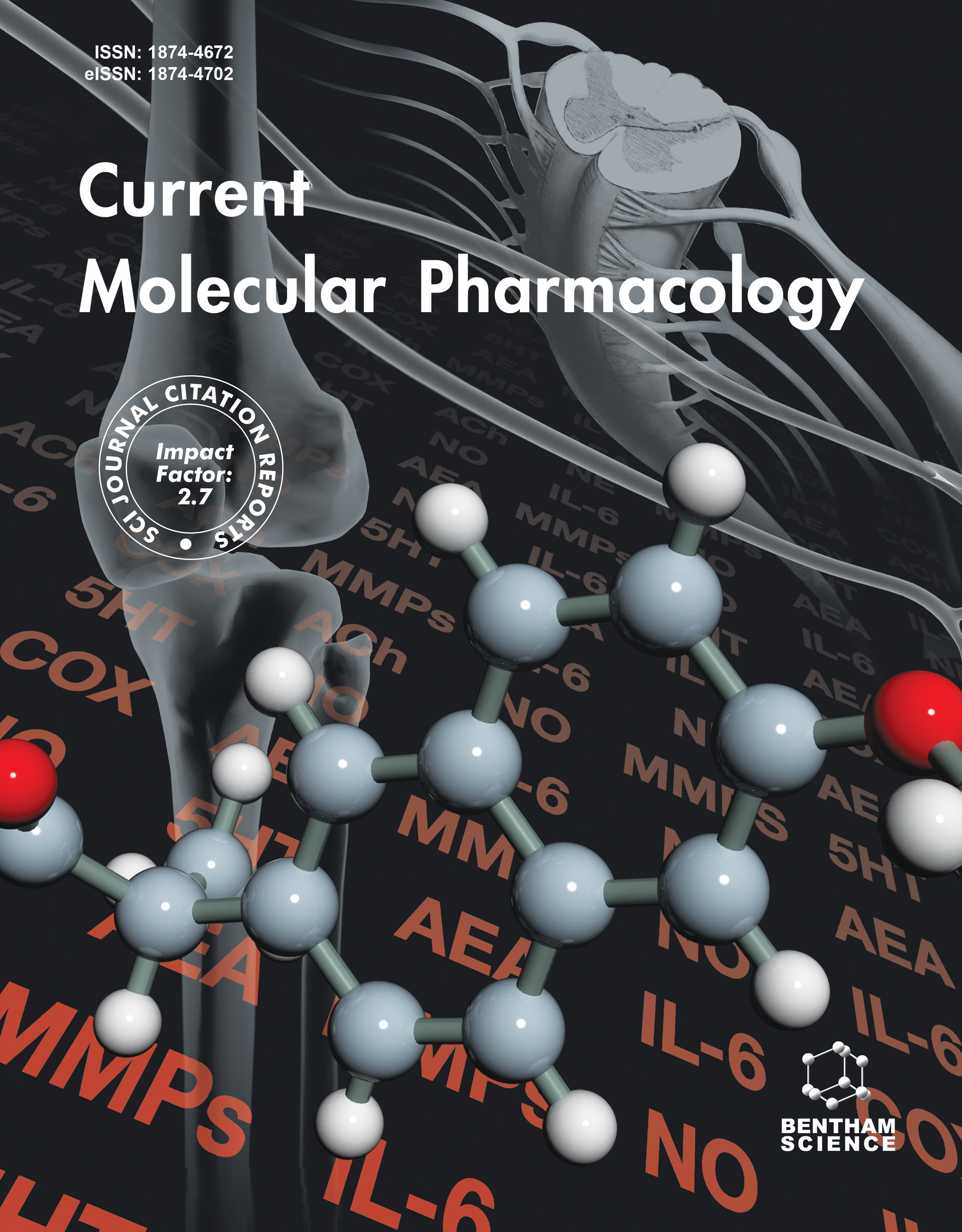- Home
- A-Z Publications
- Current Molecular Pharmacology
- Previous Issues
- Volume 15, Issue 5, 2022
Current Molecular Pharmacology - Volume 15, Issue 5, 2022
Volume 15, Issue 5, 2022
-
-
Caveolin-1: A Promising Therapeutic Target for Diverse Diseases
More LessAuthors: Shivani Gokani and Lokesh K. BhattThe plasma membrane of eukaryotic cells contains small flask-shaped invaginations known as caveolae that are involved in the regulation of cellular signaling. Caveolin-1 is a 21-24k- Da protein localized in the caveolar membrane. Caveolin-1 (Cav-1) has been considered as a master regulator among the various signaling molecules. It has been emerging as a chief protein regulating cellular events associated with hom Read More
-
-
-
Therapeutic Potential of Resveratrol in Diabetic Nephropathy According to Molecular Signaling
More LessBackground: Diabetic nephropathy (DN), as a severe complication of diabetes mellitus (DM), is a crucial menace for human health and survival and remarkably elevates the healthcare systems’ costs. Therefore, it is worth noting to identify novel preventive and therapeutic strategies to alleviate the disease conditions. Resveratrol, as a well-defined anti-diabetic/ antioxidant agent has capabilities to counteract diabetic complication Read More
-
-
-
Key miRNAs in Modulating Aging and Longevity: A Focus on Signaling Pathways and Cellular Targets
More LessAging is a multifactorial process accompanied by gradual deterioration of most biological procedures of cells. MicroRNAs (miRNAs) are a class of short non-coding RNAs that post-transcriptionally regulate the expression of mRNAs through sequence-specific binding, contributing to many crucial aspects of cell biology. Several miRNAs are expressed differently in various organisms through aging. The function of miRNAs in modulat Read More
-
-
-
A Clinical Perspective of Soluble Epoxide Hydrolase Inhibitors in Metabolic and Related Cardiovascular Diseases
More LessAuthors: Kanika Verma, Smita Jain, Swati Paliwal, Sarvesh Paliwal and Swapnil SharmaEpoxide hydrolase (EH) is a crucial enzyme responsible for catabolism, detoxification, and regulation of signaling molecules in various organisms including human beings. In mammals, EHs are classified according to their DNA sequence, sub-cellular location, and activity into eight major classes: soluble EH (sEH), microsomal EH (mEH), leukotriene A4 hydrolase (LTA4H), cholesterol EH (ChEH), hepoxilin EH, paternally expre Read More
-
-
-
Immunopharmacological Properties of VitD3: 1, 25VitD3 Modulates Regulatory T Cells and Th17 Cells and the Cytokine Balance in PBMCs from Women with Unexplained Recurrent Spontaneous Abortion (URSA)
More LessAuthors: Jiefan Gao, Li Wang, Lei Bu, Yangyang Song, Xiao Huang and Jing ZhaoBackground: VitD3 may contribute to a successful pregnancy through modulation of immune responses. Therefore, VitD3 deficiency may have a role in the immunopathogenesis of unexplained recurrent spontaneous abortion (URSA). However, the mechanisms of immunomodulatory actions of VitD3 in decreasing the risk of recurrent spontaneous abortion have not been understood well. Objective: The purpose of this researc Read More
-
-
-
A Proteomics Study of the Subacute Toxicity of Rat Brain after Long- Term Exposure of Gelsemium elegans
More LessAuthors: Meng-Ting Zuo, Si-Juan Huang, Yong Wu, Mo-Huan Tang, Hui Yu, Xue-Jia Qi and Zhao-Ying LiuBackground: Gelsemium elegans (G. elegans) has been shown to have strong pharmacological and pharmacodynamic effects in relevant studies both in China and USA. G. elegans has been used as a traditional medicine to treat a variety of diseases and even has the potential to be an alternative to laboratory synthesized drugs. However, its toxicity severely limited its application and development. At present, there is litt Read More
-
Most Read This Month
Article
content/journals/cmp
Journal
10
5
false
en


